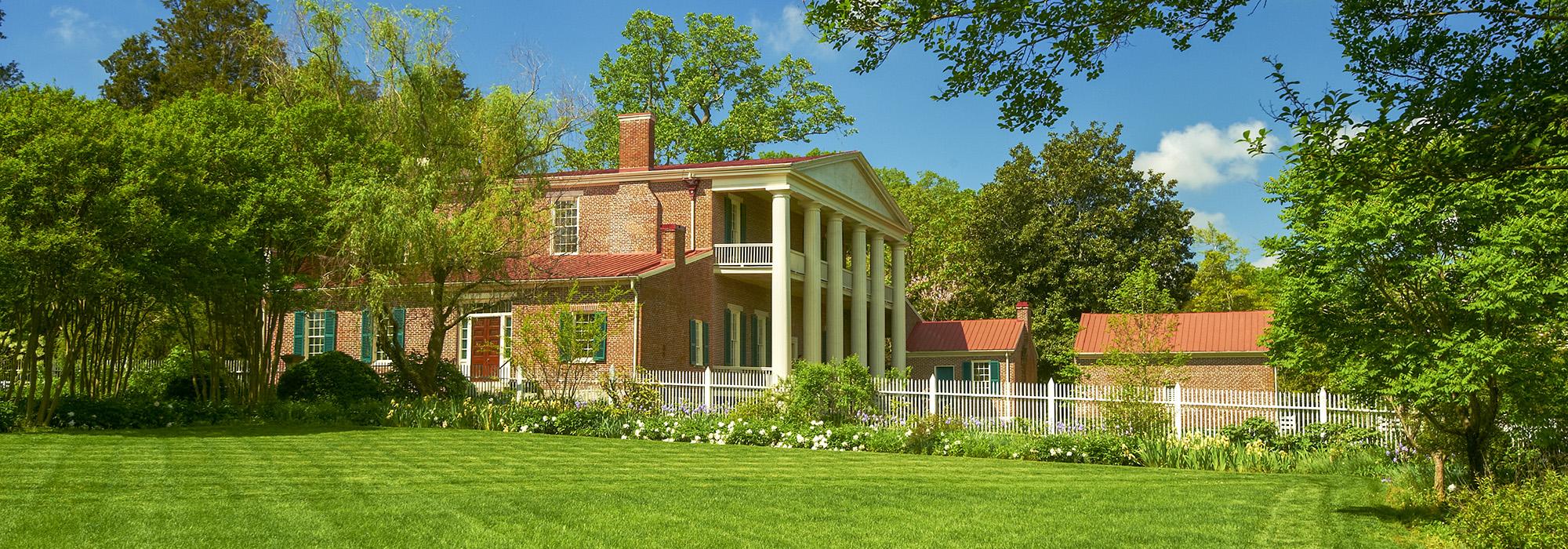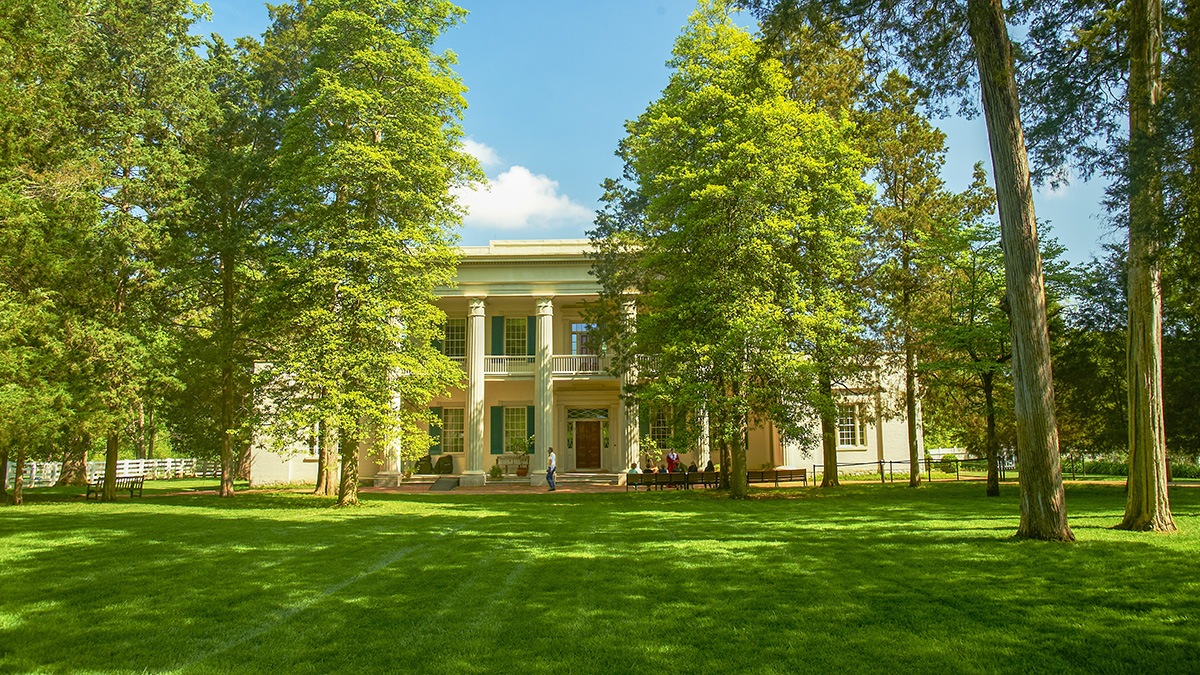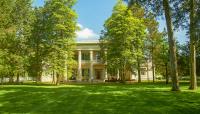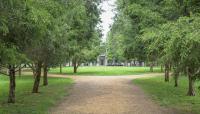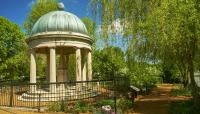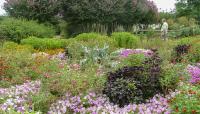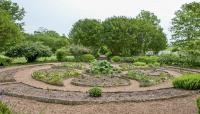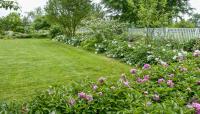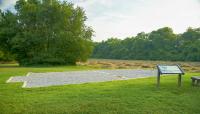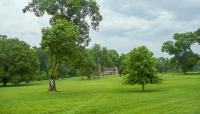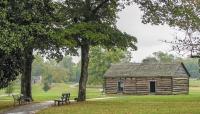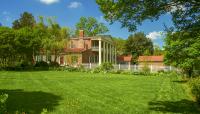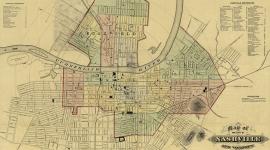Landscape Information
This 1,120-acre property includes 1,050 acres acquired by Andrew Jackson between 1804 to 1845. During Jackson’s tenancy the property was a working plantation, with 200 acres used for the production of cotton, with the remainder used for food production and racehorse breeding.
In 1819 Jackson established a Federal-style mansion and his former residence, a farmhouse situated to the northeast, was converted into a single-story cabin for enslaved peoples. The cabin and adjacent 1805 structure, which served as kitchen and dwelling, were rehabilitated in 2005. The dwelling of formerly enslaved Alfred Jackson is located less than 200 feet northeast of the mansion; archeological excavations have revealed the locations of thirteen additional quarters occupied by enslaved peoples, throughout the property.
Jackson engaged English gardener William Frost to design a formal garden east of the mansion. The garden, designed in 1819, is a classical parterre, with narrow paths lined with evergreen shrubs and fruit trees and a central circular bed planted with flowers and herbs. In 1831 architect David Morrison designed a temple-like Grecian monument in the garden’s southeast corner to commemorate and mark the gravesite of Jackson’s late wife, Rachel, and enlarged the mansion. The mansion was again redesigned in its current Greek Revival style by Joseph Reiff and William Hume in 1836 after a fire.
Following Jackson’s death in 1845 he was buried beside the Grecian monument and the property was divided between the State of Tennessee and private buyers. After years of neglect, the Ladies Hermitage Association (LHA) assumed responsibility for 25 core acres in 1888, with the rest used for a Confederate Soldier’s Home. In the 1930s the Works Progress Administration converted the Soldier’s Home property into a working farm and constructed several visitor-oriented buildings. The mansion was rehabilitated between 1989 to 1997, and in 2003 the LHA acquired the entire, original 1,050-acre tract.
The property is designated as an arboretum and includes six nearly 200-year-old cedar trees, that serve as living witnesses to the site’s history. The property was designated a National Historic Landmark in 1960 and listed in the National Register of Historic Places in 1966.



